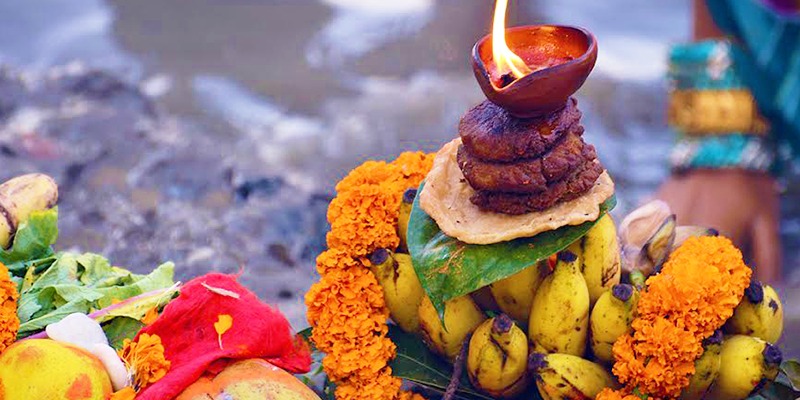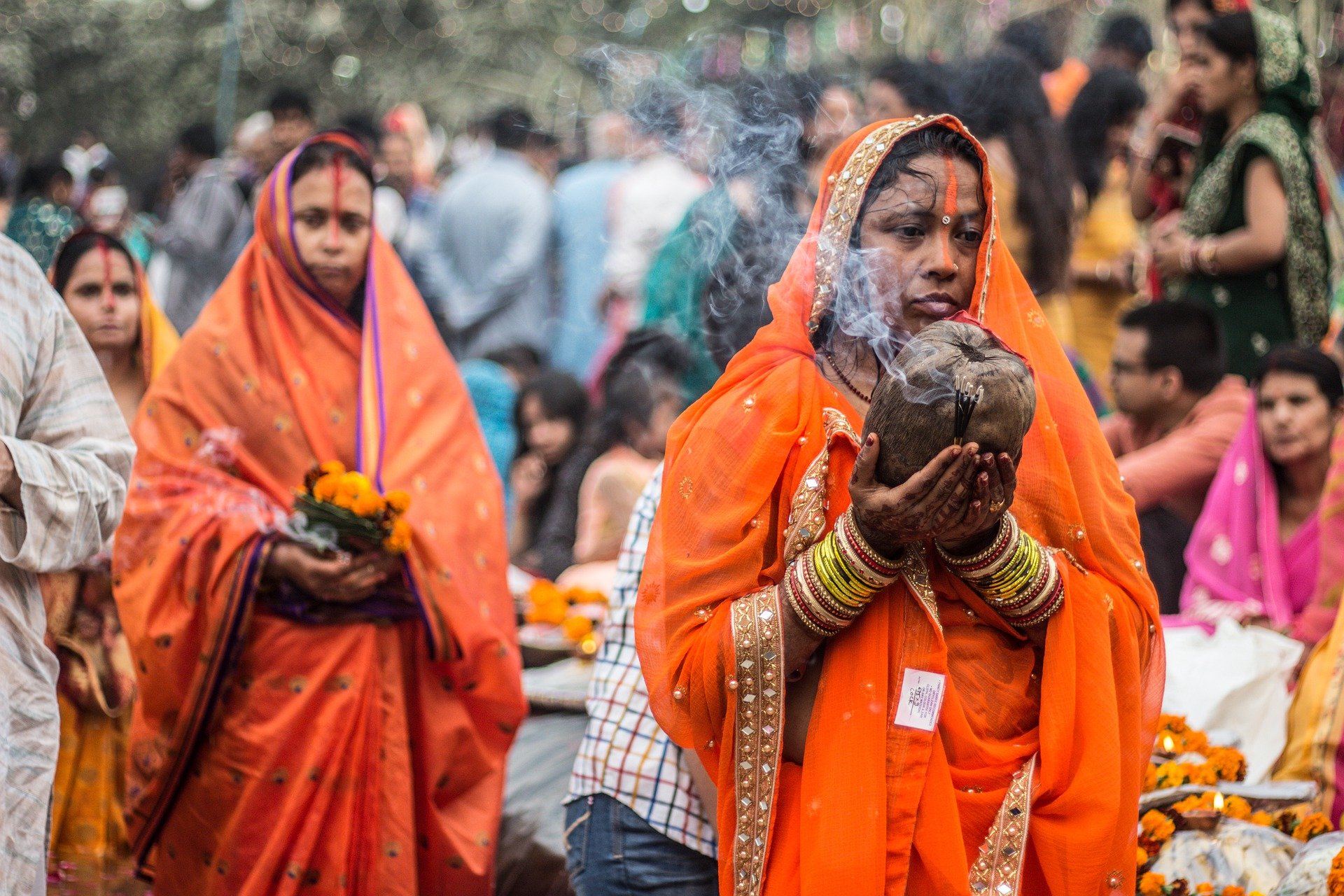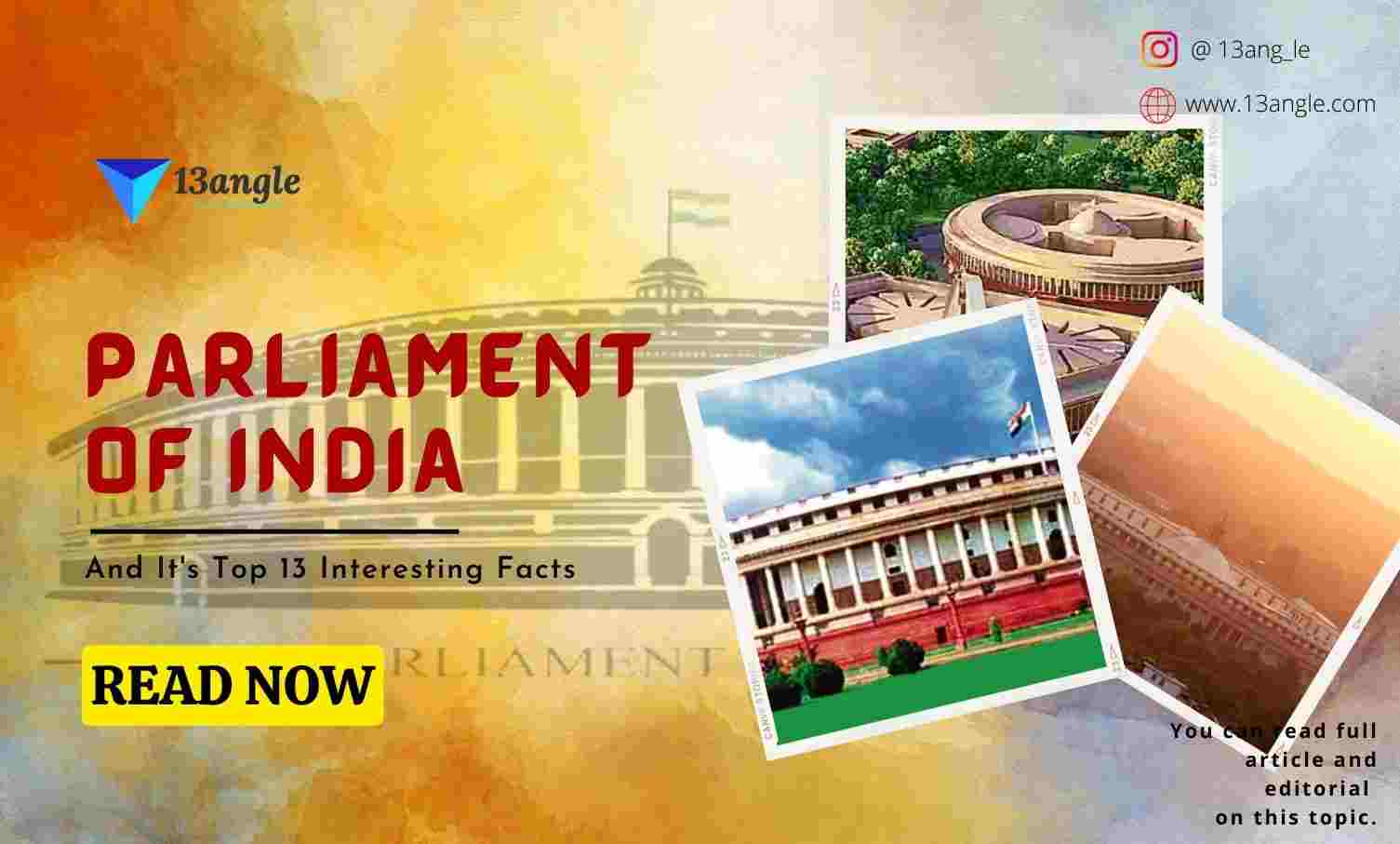
Introduction
Our country, India, the land of festivals, celebrates the multitude of social and religious gatherings throughout the year in different corners of the nation with cheer and enthusiasm. Among these sacred festivals celebrated in the country, Chhath Puja is very important, particularly for Bihar.
Chhath Puja is a festival devoted to Sun God Surya and his wife Usha, also revered as Chhathi Maiya. During the auspicious Chhath Puja, people praise and thank Lord Surya for the constant energy and life force that sustains the life of Earth. Worshipers believe that the Sun is also a source of healing and helps to cure many illnesses and diseases.
The term “Chhath” translates to sixth in Bhojpuri, Maithili, and Nepali dialects. The festival is observed on the 6th day of the Kartikeya month of the Hindu calendar and hence is known as the Chhath Puja. According to the English Calendar, it falls in the month of October or November. This festival lasts for 4 days, making it the longest festival after Navratis.
Chhath Puja is celebrated elaborately in Bihar, Jharkhand, and regions of Uttar Pradesh and Nepal. It is also celebrated in Madhya Pradesh, Chhattisgarh, Chandigarh, Gujarat, Delhi, and Mumbai. Being the most prominent festival of Bihar and Jharkhand, Chhath Puja is celebrated with great zeal. Lakhs of devotees from across the country gather at rivers, dams, ponds, ghats, and other water bodies to offer prayers. Chhath puja is the most important festival of Bihar and has a distinct flavor that attracts devotees.
Relevance And Significance
The Sun Lord is the primary source of energy for the earth dwellers. Therefore, during the Chhath Puja, also known as Chhath Parab, people thank the Sun God for protection of the living and seek his grace. Lord Surya is thanked by devotees for the longevity and prosperity of their family members and close ones. Devotees offer their gratitude to the goddess Usha, the first rays of the morning, and Pratyusha, the last ray of the evening along with the Sun God.
Other than the religious relevance, scientific notions are associated with the rituals of this auspicious festival. To complete the rituals, devotees await at the banks of the rivers for long hours. The ultraviolet rays of the sun during the morning and the evening are at their weakest during sunrise and sunset, which are extremely beneficial in the detoxification of the human body, mind, and soul.
The rituals of Chhath Puja have certain agricultural importance for it is called a post-harvest festival, where people showcase their gratitude for a good harvest by the season’s end.
Legends

Chhath Puja, one of the oldest rituals inscribed in the ancient mythological scriptures such as the Rigveda mentions some hymns in the praise of Lord Surya. Chhath Puja has been known in the pages of both the epics, The Ramayana and The Mahabharata.
In the Ramayana, the Chhath ritual was carried out by Lord Rama and Sita after their return from the exile of 14 years. It is believed that the Sita Charan temple in Munger, Bihar is the place where she observed the Vrat during Chhath.
According to the Mahabharata, Lord Surya’s son Karna was the first person to perform some of these rituals. He offered prayer to the Sun god standing in the water and offered Prasad to the needy. This gradually became a ritual of the Chhat Puja. Later, Draupadi and the Pandavas performed these rituals to regain their lost kingdom and seek blessings from the supreme lord.
Rituals
The 4-day rituals of Chhath Puja include taking holy baths in the river, fasting, and offering Prasad and Arghya to the sun during sunrise and sunset.
Day One: Nyay-Khay
On the first day, devotees take a bath in the holy water of the river Ganga early in the morning. After this, they prepare prasad as an offering to Lord Sun. The home is showered with Ganga Jal to observe purity. People fast and eat just one meal in the entire day. They prepare chana-daal, Kaddu sabzi, and kheer in bronze or soil vessels. Salt is not used in the preparation of this meal.
Day Two– Lohanda And Kharna (Argasan)
During the second day, the devotees observe fast for the entire day and break the observation after worshipping the Sun god in the evening. A special meal of Tasmai (a dish similar to kheer) and puris is offered to the Sun God, after which devotees can break their fast. After worshipping God and breaking their fast, people again fast for the next 36 hours. They go without water and food during this time. It is considered one of the toughest periods of the ritual.
Day Three– Sandhya Arghya (Evening Offerings)
The third day of Chhath Puja is also observed by fasting and without consuming food or water. On this day, the children of the family prepare bamboo baskets and fill them with seasonal fruits like apples, oranges, bananas, dry fruits, and sweets like Ladoo, Saanch, and Thakua. The male members carry the basket filled with prasad on their heads to the riverside. These baskets are kept open at the ghats where the fast observe (Vratin) takes a dip, and offers ‘Arghya’ to the setting sun. These baskets are brought back to the house after the ritual.
At night, a colorful event called Kosi is celebrated by lighting diyas under five sugarcane sticks while singing folk songs and mantras. These five sticks represent the five elements of nature or the Panchatattva which includes the earth, water, fire, air, and space.
Day Four– Bihaniya Arghya ( Morning Offerings)
On the last day, devotees gather with their families on the banks of the River before sunrise. The baskets are brought back to the ghats and Vratin takes a dip in the water and offer prayers and prasad to the Sun and Usha. After the offerings, the devotees break their fast and have Prasad from the baskets.
On the way back home, the Vratin worship the soil as a gesture of thanks for providing them with food.
Top 13 Interesting Facts About Chhath Puja
The intricate rituals associated with Chhath Puja is categorically divided into six stages of purification and infusion of cosmic solar energy.
The observation of fast during the Chhath Puja helps in detoxifying the mind and body. It does readies the mind and body of the devotee to imbibe the cosmic energy of the Sun.
Standing in a holy river reduces the loss of energy from the human body.
The puja rituals facilitate the psychic energy, termed as Prana to move upwards to the psychic channel in the spine (Sushumna).
The cosmic solar energy enters the Triveni complex formed with a close association of the pineal, pituitary and hypothalamus glands.
Triveni complex is achieved through the retina and optic nerves leading to its activation.
As the Triveni complex activates, the spine gets polarized which turns the body of devotee into a cosmic powerhouse that can receive the Kundalini Shakti, a divine form of energy.
The body of the devotee during the puja rituals turns into a channel that can conduct, recycle and transmit the energy of the entire universe.
The rituals detoxify the body and mind and provides mental calmness.
The process of Chhath rituals enhances immunity, infuses energy and reduces the frequency of extreme emotions, and negativity.
11.The sugarcane stick used during the puja rituals represents the Panchatattva (Earth, Air, water, fire and Space).
Chaitra Chhath, distinctly known as “Chaiti Chhath”, this is observed in the Chaitra month of Vikram Samvat.
Kartik Chhath, popularly called “Chhath”, is celebrated at a very large scale in the Kartika month of Vikram Samvat.





